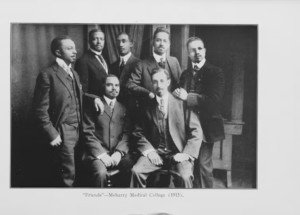“Do you think you could sum up the essence of all you’ve learned in one sentence?”
That was the question my friend Jim Collins, the famed leadership author, suddenly asked me as we were hiking up a mountain a few years ago.
“You’ve been wandering around the world for the last 45 years,” he continued, “working in some of the world’s toughest conflicts from the Cold War to the Middle East, from strikes to boardroom battles. What can help us in these times of intense conflict?”
I am an anthropologist by training. If I were a Martian anthropologist looking at us now, I would say we live in a time of great paradox. Never before in human evolution have we enjoyed such an abundance of opportunities to solve the world’s problems and live the life we want for ourselves and our children. And yet at the same time, with the rapid changes and disruptions, we face a wave of destructive conflict that’s polarizing every facet of life from family to work to community to our world—and paralyzing our ability to work together.
How do we navigate this stormy time to be able to realize the enormous opportunities we have at hand?
First, we need to be realistic: we can’t end conflict. Nor should we. In fact, we may actually need more conflict, not less—and by that, I mean the healthy conflict that allows us to engage our differences, grow, and change what needs to be changed. The choice we face is not to get rid of conflict but to transform it from destructive fighting into creative, constructive, collaborative negotiation.
So what do we need to transform our conflicts and navigate these tumultuous times?
Read more: The Science of Getting Along
I would suggest we need three things above all: a clear perspective, a way out, and lots of help from others.
Let’s start with perspective. When it comes to conflict, we are often our own worst enemies. The biggest obstacle to getting what I want is not what I think it is. It is not the difficult person on the other side of the table. It is the person on this side of the table—it is the person I look at in the mirror every morning. It is our natural, very human, very understandable tendency to react—often out of fear and anger. We humans are reaction machines. As writer Ambrose Bearce once quipped, when angry you will make the best speech you will ever regret.
What’s the alternative?
It’s to do the exact opposite and pause for a moment. It is to think about what you really want and how you can get there. Imagine yourself on a stage and then go to the balcony—a place of calm where you can keep your eyes on the prize and see the bigger picture.
In other words, start by stopping.
That sets us up for the next challenge to find a way out. In today’s tough conflicts, we need more than ever to be able to find a way out of the labyrinth of destructive fights.
The other side may be far from cooperative. They dig in and refuse to budge.They pressure, attack, and threaten.
Their position, their mind, is far away from yours. There is a huge chasm in between where you are and where they are. That chasm is filled with fear, anger, doubt, unmet needs, distrust. Our challenge is to build a bridge over the chasm—not just an ordinary bridge, a golden bridge. In other words, create an attractive way out for them and for you.
Instead of pushing, do the exact opposite: attract. Instead of making it harder for them, do the exact opposite. Make it easier for them, easier to make the decision you want them to make. Leave your thinking for a moment and start the conversation where their mind is. Listen to them, try to put yourself in their shoes, and figure out their needs and fears so you can address them while advancing your interests, too.
That leads me to the third point: get some help. In today’s tough conflicts, it’s not easy to go to the balcony or build a golden bridge. No matter how good we might be, we are going to need help—and lots of it.
Here’s the very common mistake we make when things get rough. We reduce the conflict to two sides—it’s us against them, union against management, Democrats against Republicans. What we forget is that in any conflict there is always a third side — the people around us, the friends, family, colleagues, neighbors, allies, and neutrals.
The third side constitutes a huge untapped potential resource for transforming the conflict. It is like a container within which even the hardest conflicts can begin to give way to dialogue and negotiation. The surrounding community can help calm the people who are fighting. It can bring the parties together and help them communicate and understand each other better. It can help them explore a way out, a golden bridge.
When the conflict is really hard, we may need a kind of community intervention. I call this a “swarm” —a critical mass of persuasive influence and assistance—that can help the parties find a way through their difficulties. We need to mobilize the third side—the surrounding community—and build a winning coalition for agreement.
After all these decades working in tough conflicts and wars, people often ask me: are you an optimist or a pessimist? I like to answer that I am actually a “possibilist.” I believe in our human potential to transform even the toughest conflicts from destructive fights into creative negotiations. I believe it because I’ve seen it happen with my own eyes—in coal strikes, bitter boardroom battles, family feuds, and wars around the world. I’ve watched people unlock their hidden human potential and make the seemingly impossible become possible.
Where there are obstacles, possibilists look for opportunities. It is a change in mindset.
Possibilists aren’t blind to the dark side of human nature. To be a possibilist means to look at the negative possibilities too, but then to use that perspective to motivate us to look for the positive possibilities that avert the worst and bring about the possible.
I have seen how conflict can bring out the worst in us, but it can also bring out the best.
So what was the single summary sentence I offered Jim on that memorable mountain hike? “The path to possible is to go to the balcony, build a golden bridge, and engage the third side.”
No conflict, however difficult, is impossible. Conflicts are, after all, made by humans so they can be solved by humans. And if we can transform our conflicts, we can transform our lives. We can transform our world.
That is my dream.




